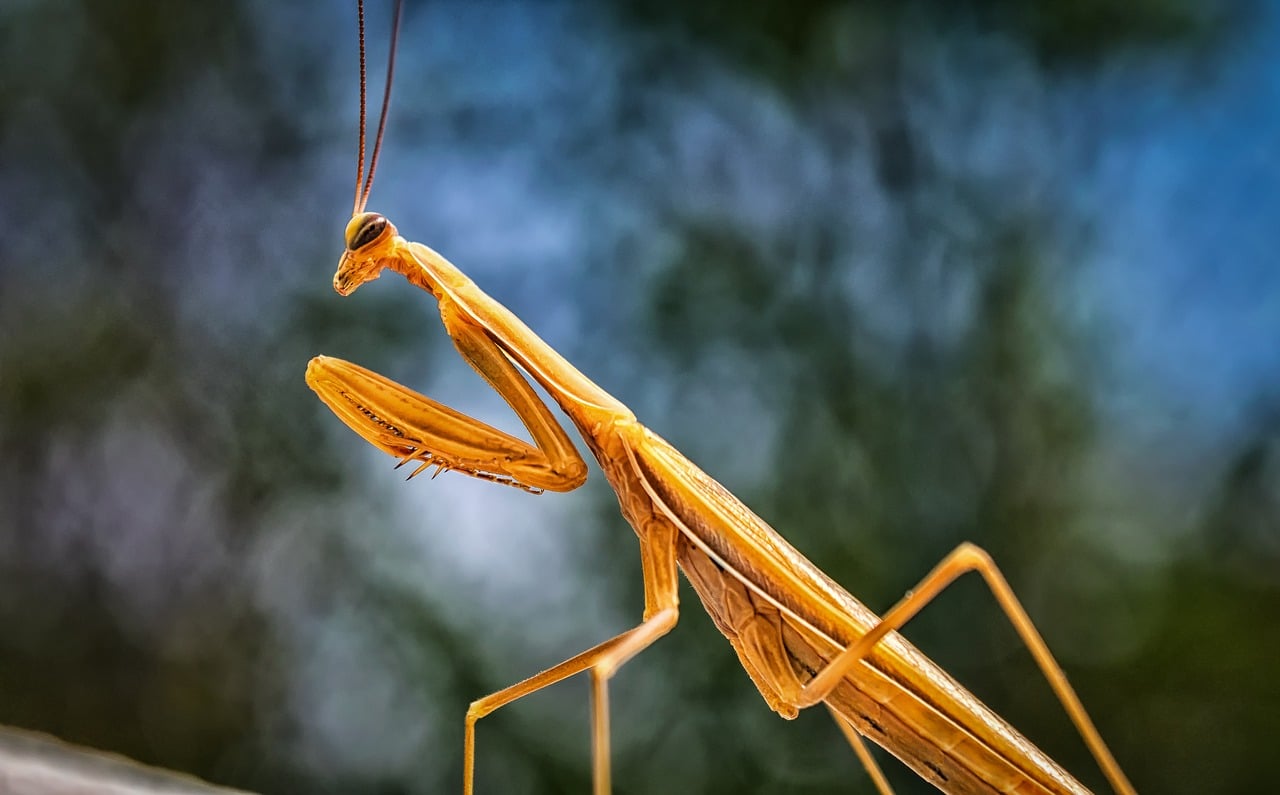Scientists have been searching for methods to improve eyes and vision, in particular for robots. During their research, they referred to praying mantis that are insects that can, along with humans and other animals, perceive three-dimensional objects and structures. Nevertheless, the praying mantis is the only known insect that has 3D vision, or stereo vision. When studying their vision, researchers discovered a new type of 3D vision in praying mantis.
According to the new study, the 3D vision in the praying mantis is unique. These insects can perceive objects differently compared to humans. A team of scientists at the Institute of Neuroscience at Newcastle University, funded by the Leverhulme Trust, wanted to see whether the 3D vision of praying mantis works in the same way as ours.
The scientists engineered tiny, customized pairs of 3D glasses and temporarily glued them to the praying mantis with beeswax.
The researchers played 3D movies to the praying mantis using a simple version of the same technology which helps humans watch 3D movies. In that way, they wanted to see the depth of their perception.
The insects were introduced to two types of movies. The first movie displayed video clips of a moving prey, while the second movie included static patterns of dots and a moving spiral of dots. The researchers discovered that the praying mantis successfully identified the prey in the movies. Additionally, they even tried to capture it.
The researchers determined that humans are quite good at perceiving objects and structures in 3D that are still images. On the other hand, mantis don’t need 3D vision to function in static image, as they are attacking only moving prey. That being said, mantis are capable of focusing on objects or things that are moving or changing. According to the researchers, the 3D vision in praying mantis allows them to spot changes that occur in the movies, although human eyes can’t identify those changes.
“This is a completely new form of 3D vision as it is based on change over time instead of static images,” Dr Vivek Nityananda, behavioural ecologist at Newcastle University, was quoted in a statement. “In mantises it is probably designed to answer the question ‘is there prey at the right distance for me to catch?'”
“Many robots use stereo vision to help them navigate, but this is usually based on complex human stereo. Since insect brains are so tiny, their form of stereo vision can’t require much computer processing,” Dr Ghaith Tarawneh at Newcastle University’s school of engineering, who was also involved in the research, said. “This means it could find useful applications in low-power autonomous robots.”
Researchers published their findings regarding the new type of 3D vision in praying mantis in the journal Current Biology.





